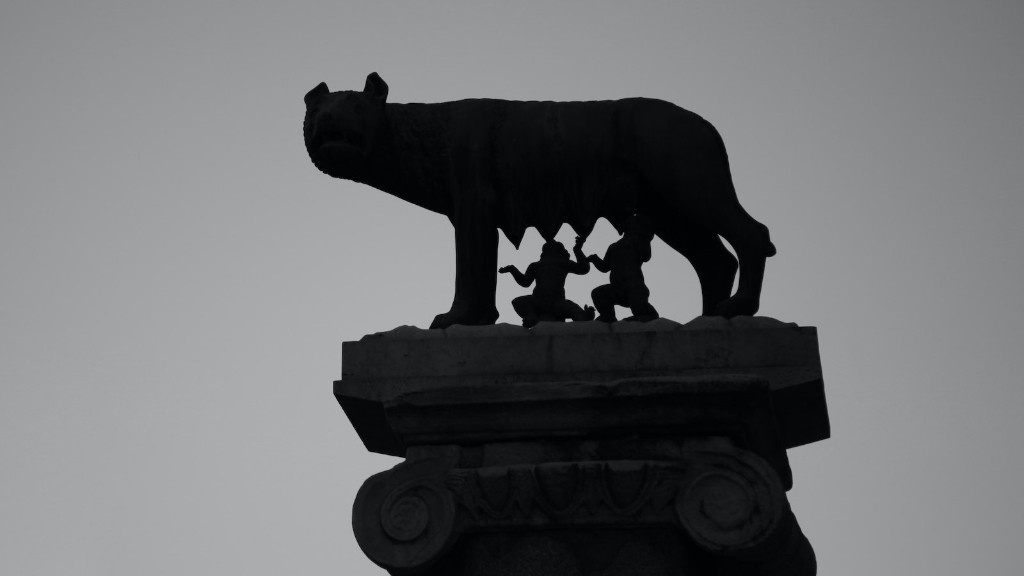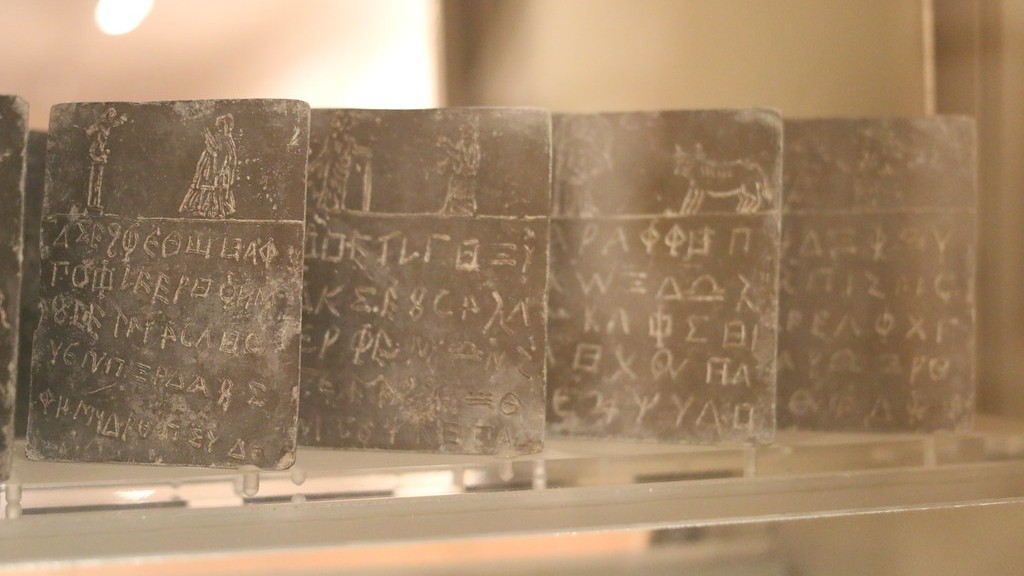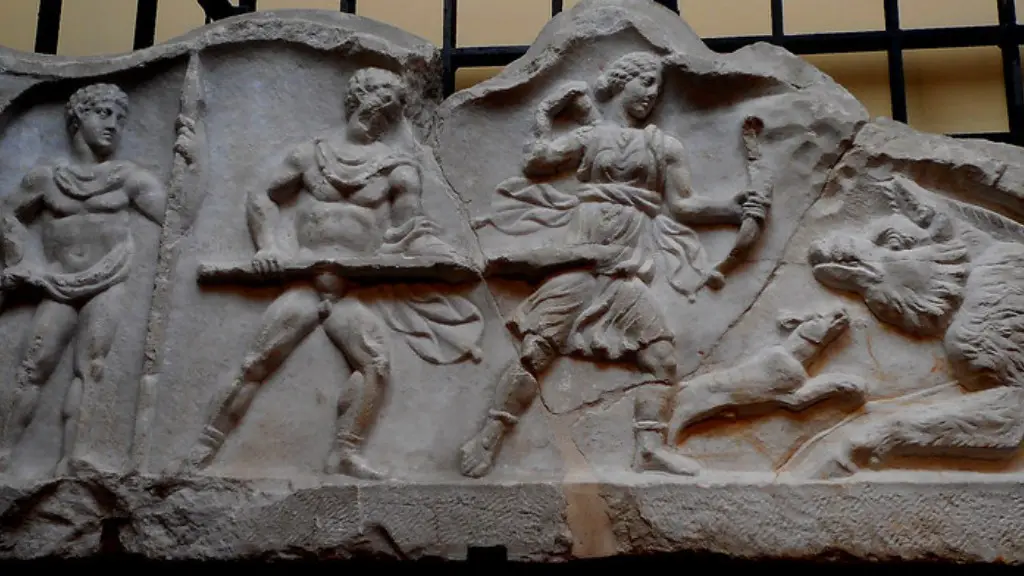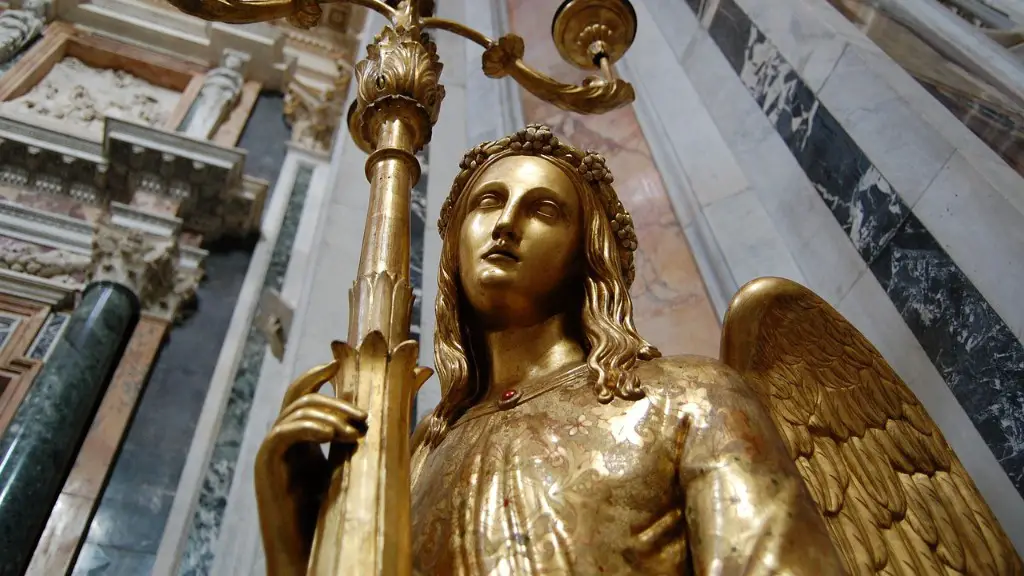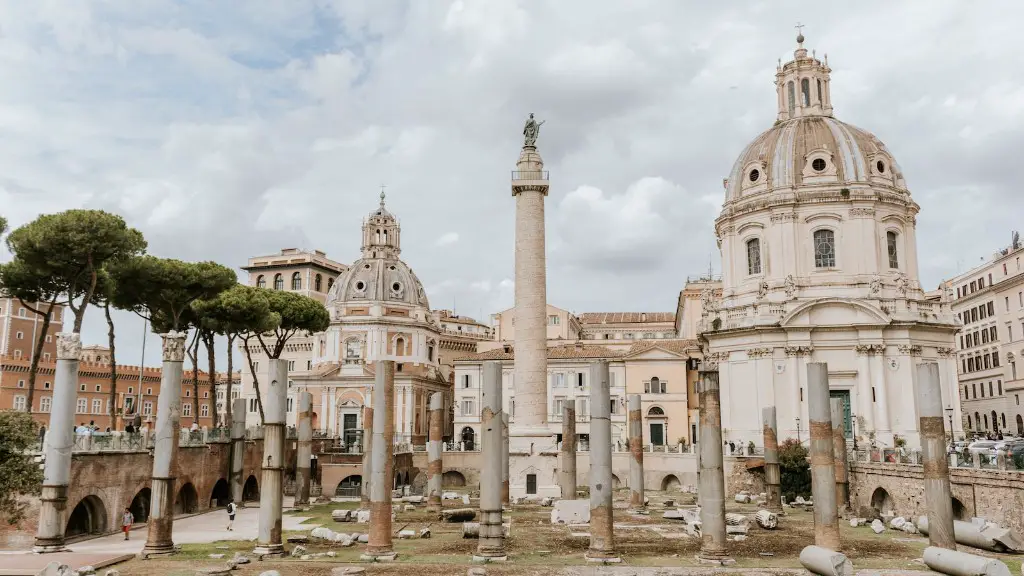From the early days of Red tunics to silk robes and daring headgear, Roman clothing was a reflection of their culture, wealth and status. The clothing people wore in Ancient Rome was an important and colourful part of everyday life. Even though clothing items were made from readily available materials, they were put together in a way that showed sophistication and care. Clothes signified social rank, occupation and even ethnicity; right down to various colours worn by different classes of people.
Fabrics used to make Roman clothing included wool, linen and silk, while colours were mainly muted earth tones. Their clothing was far from boring though, and gold threads, jewels, feathers and multicoloured stripes were included in garments to add shine and flair. Although silk was the staple fabric of the wealthy, the majority of Romans were poor, making access to expensive materials almost impossible. People would also wear other fabrics such as leather for extra protection and coarse undyed wool for everyday wear.
Men and women wore long tunics made of wool with a rectangular slit for the head and short sleeves. Women’s classic version of this tunic was often belted at the waist with decorative draping over the legs. Trousers were also part of the typical Roman wardrobe. Men traditionally wore trousers that were made of wool and draped till the knee while women had to wear trousers made of linen. Both men and women wore a tunic and trousers combo.
In Ancient Rome people also had footwear based on their social rank. Men usually wore shoes that were light and had leather soles, while those of higher status wore shoes made of expensive leather and fur. The shoes of Roman women were similar, but extended above their ankles for greater coverage and security. The type of footwear people wore was often accompanied by an array of accessories. Wealthy women were not to be seen without a pair of elegant earrings and colourful necklaces, while men also wore impressive jewellery.
Headwear was also an important part of Roman fashion. Women wore a variety of hairstyles, including tight curls and up dos. The majority of women also wore a piece of cloth draped around their foreheads, while some more wealthy women had a headpiece made of jewels. Men usually wore a wide-brimmed hat called a “petasus” which was popular among the common people as well as the upper classes. It made a statement of power, influence and social rank.
Clothes in Ancient Rome represented how people were perceived and respected. In contrast to the modern world, where style is completely personal, clothing was an indication of social standing in Rome. Men wore brightly coloured cloaks to project power and wealth, while women wore draping gowns to demonstrate their modesty and femininity. Although there is no longer a need to show wealth, status or power with clothing, the fashion of Ancient Rome still has an influence in modern-day fashion.
The Role of Clothing in Ancient Rome
Clothing was an important element of Ancient Roman life and culture. Roman fashion was highly structured and clothing was used to communicate a clear socioeconomic message. Wealthy Romans could afford more extravagant garments than the lower classes, and these luxuries were showcased in public. Clothes were used to distinguish between social classes and reflect the prestige of certain roles as well as the prescribed gender roles. Wealthy men wore extravagantly coloured and patterned cloaks and women wore layers of colourful fabrics.
Clothing was also an indicator of the wearer’s rank and station in society. For example, men who served in the Roman military wore a uniform of “tunica laticlavia”, a short-sleeved tunic with broad stripes, as a sign of their office. People of higher positions in society wore more expensive materials, such as silks and linens, with fine details and bright colours.
While clothing was used to identify social standing, Roman clothing was also designed to provide comfort and convenience in everyday life. Women, in particular, wore clothing that allowed them to move freely while protecting them from the elements. Loose-fitting garments, such as the traditional stola, made it easier to perform everyday activities.
Roman fashion was also inspired by their religious beliefs. In late antiquity, Christian symbolism started to become popular and this was reflected in clothing. Christian elements could be seen in the depiction of the four evangelists or in the pieces of ancient jewellery with Christian symbols. Roman clothing and jewellery during this period were adorned with images of biblically inspired motifs and scenes.
Accessories of Ancient Roman Clothing
Accessories for women in Ancient Rome were plentiful and ranged from necklaces to shoes, as well as jewellery. Women often adorned themselves with ornate, dangling earrings and necklaces, which were made of silver and gold. Footwear for Roman women was usually sandals and these were sometimes embellished with colourful threads and jewels. As the Roman Empire progressed, footwear such as ankle boots and foot straps became part of the female wardrobe.
Men had different types of accessories compared to women. Men wore rings with engraved stones, as well as jewellery featuring various animals and gods. Men also wore hats and caps, handmade by a cordwainer, as a way to protect themselves from the elements. The majority of clothing was adorned with decorative belts, which were often made from leather or cloth.
In addition to the clothing worn by men and women, both sexes used ornaments for their hair. Men and women typically wore their hair short and would use accessories to hold them in place. Among the most common accessories were combs and pins for women, and an extra piece of cloth for men. This extra layer of cloth was called a “capillus” and was used to keep a man’s hair from falling out. These embellishments were often made from precious metals and jewels.
Clothing for Festivals and Special Occasions
Festivals and special occasions provided an opportunity to show off one’s wealth and status. Wealthier Romans would wear more elaborate outfits, comprising multiple layers and accessorised with expensive jewellery. Women would often wear special gowns with embroidery and intricate details. These luxurious garments provided a glimpse into the lavish lifestyle of Ancient Rome’s upper classes.
Men had different styles of clothing to mark special occasions, including the infamous toga. Men traditionally wore the white toga draped over their shoulders and tied around the waist. The red toga was also popular and was reserved for senators, magistrates and Roman patricians. It reached down to the knees and was draped over the left shoulder, with a thick purple belt upon the waist.
In addition to the togas, men also wore cloaks with fibulae clasping them tightly around the body. They were often made with elaborate designs and used to make a statement of power and authority. Other garments such as tunics also featured colourful fringes and patterns, as a way to signify wealth and status.
Fashion Statements in Ancient Rome
The fashion in Ancient Rome was a reflection of the wealth and political power of the era. Clothing was seen as an indicator of status and it was used to represent rank and position in society. Wealthy Romans would wear more extravagant garments to showcase their social rank, while those of lower classes would have simpler clothing. Clothes were also used to indicate belief systems, as they often featured Christian-inspired motifs and jewellery.
At special occasions, Romans would dress in the more extravagant clothing, as a way to express their wealth and individuality. Men would often wear the toga, with luxurious fabrics and hand-dyed thread, for religious and political occasions. Women also had a range of striking clothing for special occasions, with floor-length gowns, bright capes and gold jewellery.
Although Ancient Rome is no longer around, its clothing styles are still respected today. The fashion statements from Ancient Rome have influenced modern-day clothing, from large and vibrant cloaks to colourful jewellery. Fashion from the Roman Empire still has a remarkable impact on the world today, proving that style can also be a statement of power and authority.
Clothing Materials in Ancient Rome
The clothing materials used in Ancient Rome varied significantly and were influenced by socioeconomic factors. The range of fabrics included wool, linen, cotton, and silk. The finest fabrics were reserved for those in the upper classes, while those of the lower classes had access to cheaper materials.
Colours varied, and were mainly muted earth tones. Wealthier Romans often used luxuries such as golden thread and jewels to embellish garments, while poorer citizens had to make do with cheaper fabric and less ornate accessories.
Leather was also used in Ancient Rome and primarily by those holding powerful positions. Wealthy citizens would have leather sandals with leather soles and leather boots with lace-up features. Those in the lower classes would often have leather cuffs and leggings.
Fur was also a part of Ancient Roman clothing and was primarily used in the form of cloaks, coats and hats. Wealthier households had access to heavier and more colourful furs such as otter, mink and rabbit. While the rich and powerful typically used fur to display their wealth, those in the lower classes had access to cheaper materials such as sheep fur.
Hair and Makeup in Ancient Rome
Hair and makeup were also an important part of the Roman fashion scene, and were often used to indicate social standing. Men wore their hair short, and would often use accessories such as combs and pins to keep it in place. Roman women also typically wore their hair short, but would use clips and pins with jewels and beads to dress up their hair.
Makeup was also a big part of Ancient Rome, and women would wear lip-paint and eye-paint to add some pizzazz to their look. They would often use extracts of flowers and spices to create vibrant colours, and would also use white lead paint to lighten up their complexion. These makeup products would be applied to the face, arms and neck to create an appearance that signified rank.
Overall, makeup has been an integral part of the Ancient Roman fashion scene. It was used to express social rank and to display individual style and personality. Makeup was also a way to show cultural progression and demonstrate appreciation of beauty and luxury.
